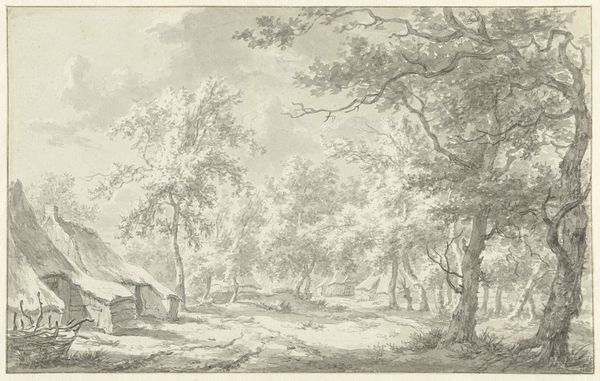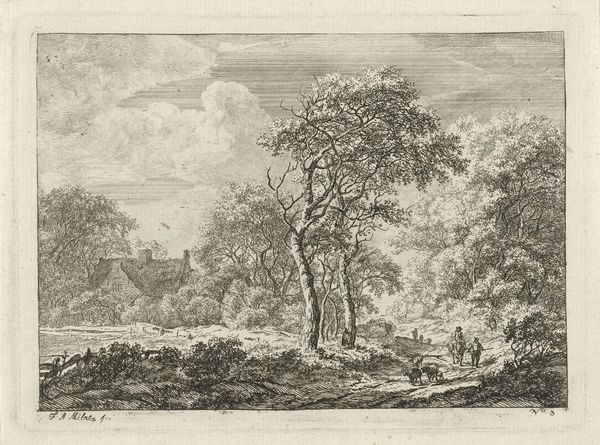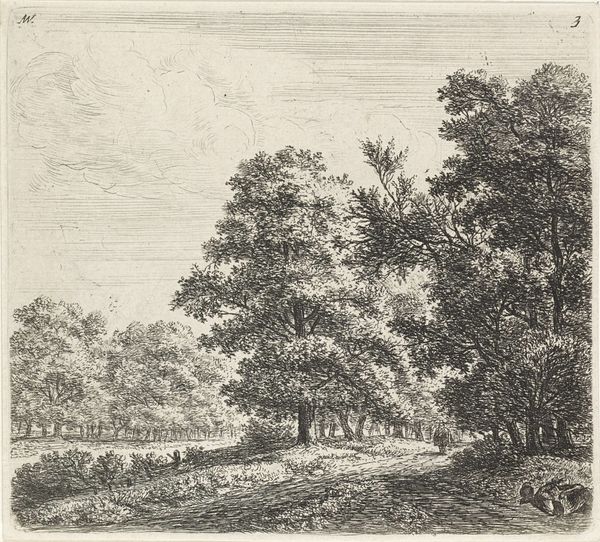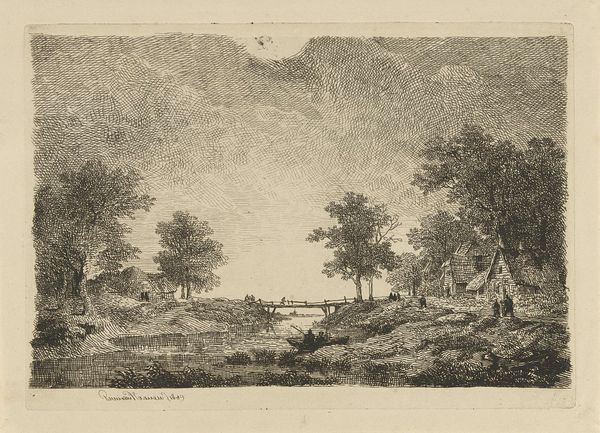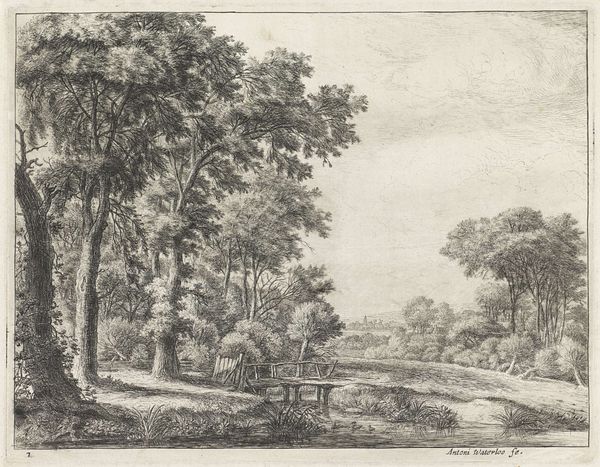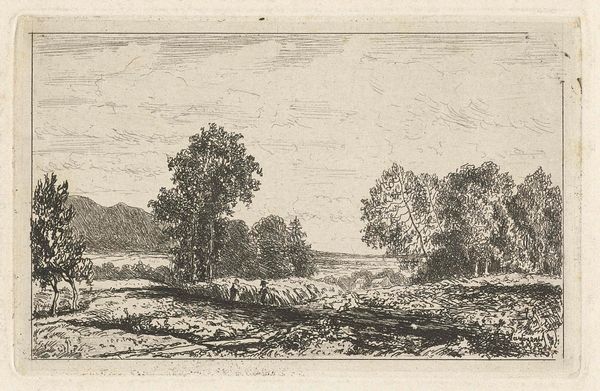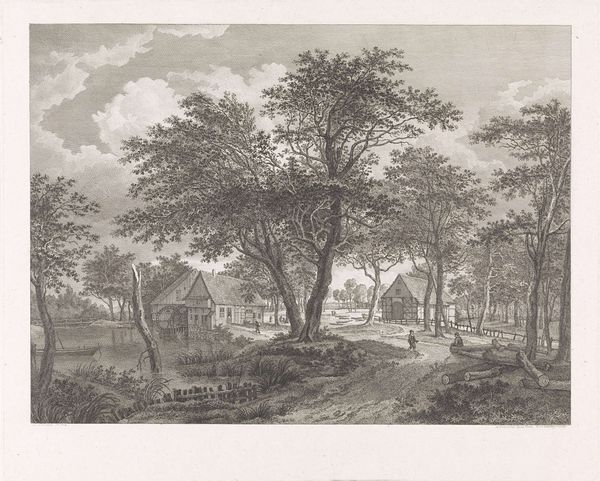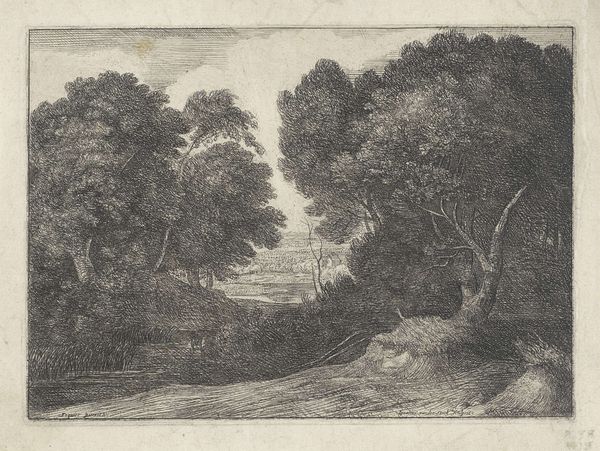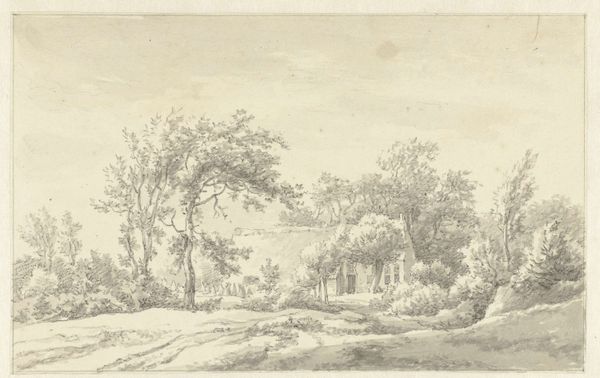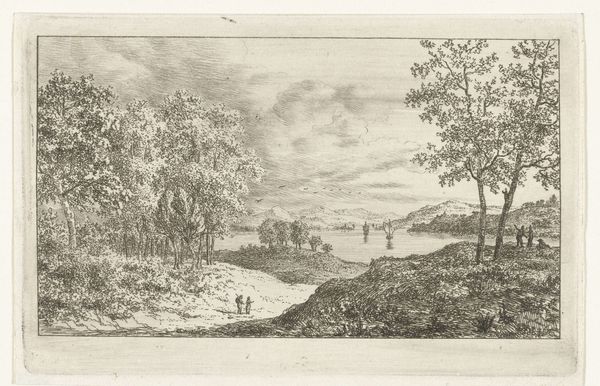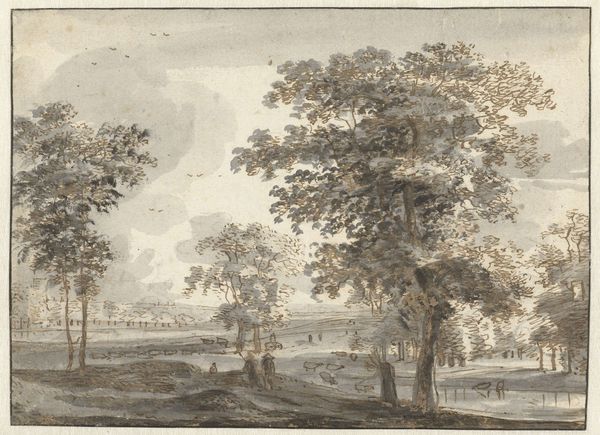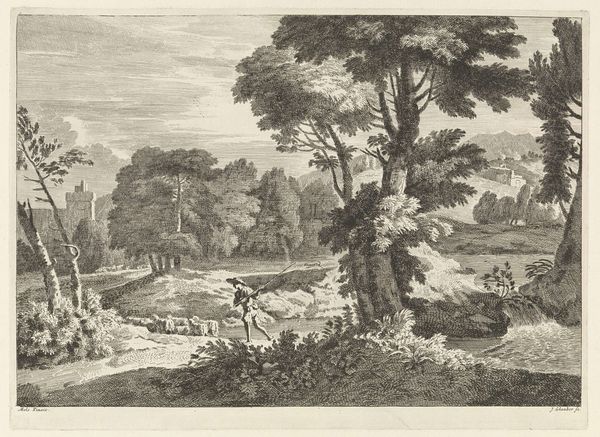
drawing, paper, graphite
#
drawing
#
landscape
#
paper
#
romanticism
#
graphite
#
realism
Dimensions: height 278 mm, width 333 mm
Copyright: Rijks Museum: Open Domain
Curator: Let’s consider "Landscape with Two Figures Under Trees," a graphite drawing on paper attributed to Daniël van Oosterhoudt, likely created sometime between 1791 and 1850. Editor: My initial impression is quietude. The grey palette creates a calm, contemplative space. The composition itself leads my eye gently through the scene, from the foreground slope to the distant water. Curator: Yes, that gentle movement really exemplifies the Romantic sensibility of the time. The landscape wasn't just a backdrop, it was a reflection of inner emotion, a mirror to the soul. Those figures seem dwarfed by the imposing trees, hinting at the insignificance of man in the face of nature's grandeur. Editor: The trees certainly dominate, their forms rendered with delicate lines, capturing light and shadow so subtly. The texture of the foliage contrasts nicely with the smoother rendering of the sky and water. You know, that foreground also has quite interesting use of varied hatching marks defining depth of field as it dissolves softly into background. Curator: Notice also the positioning of the figures: two, both men, engaging one another perhaps after an aimless wander in nature. One figure rests against the root system of a dominant central tree; this feels especially relevant for interpreting van Oosterhoudt’s Romantic sentiment, in light of this period's emphasis on ideas of kinship, fellowship, and communal association in a naturalized social hierarchy. Editor: Interesting. And even if the scene overall inspires serenity, I find those bolder, sketchier strokes in the lower foreground lend a slight restlessness to the composition. An echo, perhaps, of human anxiety within nature? Curator: Possibly! Or it could be highlighting the artistic journey—showing us how van Oosterhoudt found harmony in this careful representation of nature, mirroring the soul-searching sought in Romantic ideals of the late eighteenth and early nineteenth century. It captures both realism and longing. Editor: Ultimately, it’s in this balance between detailed observation and evocative symbolism that this simple drawing makes such a lingering impression. Curator: A potent rendering of nature's capacity to provoke internal reflection, perfectly representative of artistic trends in Van Oosterhoudt's moment in time.
Comments
No comments
Be the first to comment and join the conversation on the ultimate creative platform.
